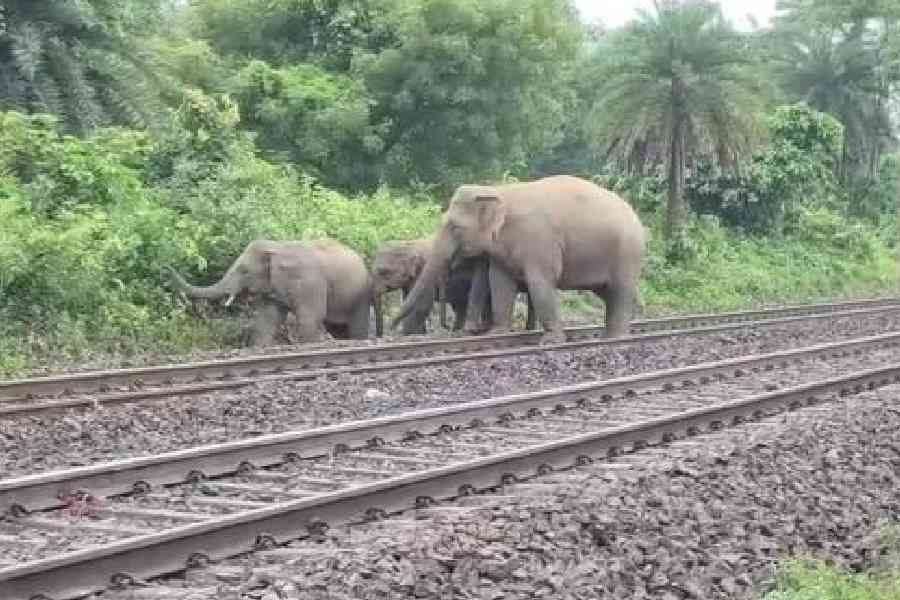The Northeast Frontier Railway (NFR) has launched an Intrusion Detection System (IDS) along sections of tracks passing through forest areas and elephant corridors to prevent animals from being mowed down by trains.
In the past 20 years, more than 70 elephants died after being hit by trains in north Bengal forests. As recently as on September 24, an elephant was killed by a train at Mongpong near Sevoke in the Kalimpong forest division. The IDS initiative aims to strike a balance between operational efficiency and environmental protection.
“The IDS uses advanced optical fibre sensing technology to detect elephant movement near tracks, generating real-time alerts for train drivers and control rooms to take timely preventive action,” said Kapinjal Kishore Sharma, the NFR chief public
relations officer.
A railway officer said the system runs parallel to tracks at a distance of 10 metres. Whenever an animal comes close, a signal is transmitted to the loco pilot of the train concerned and the respective station official, enabling them to take preventive measures.
According to the official, trial runs of the IDS have been successfully commissioned in four key sections of the NFR: the Madarihat–Nagrakata section of Alipurduar division in Bengal, the Habaipur–Lamsakhang–Patharkhola–Lumding section of Lumding division, the Kamakhya–Azara–Mirza section of Rangiya division, and the Titabar–Mariani–Nakachari section of Tinsukia division, the last three in Assam.
“These pilot installations cover 64.03km of elephant corridors so far. It will cover about 147km by April 2026,” the official added.
The Siliguri–Alipurduar stretch is one of the most vulnerable railway corridors for wildlife after its conversion from meter to broad gauge in 2004. It passes through protected areas like the Mahananda Wildlife Sanctuary, the Gorumara National Park, the Jaldapara Wildlife Sanctuary and the Buxa Tiger Reserve.
Animesh Bose, programme coordinator of the Himalayan Nature and Adventure Foundation, welcomed the move.
The forest department has already imposed speed curbs on trains moving through forest stretches.











